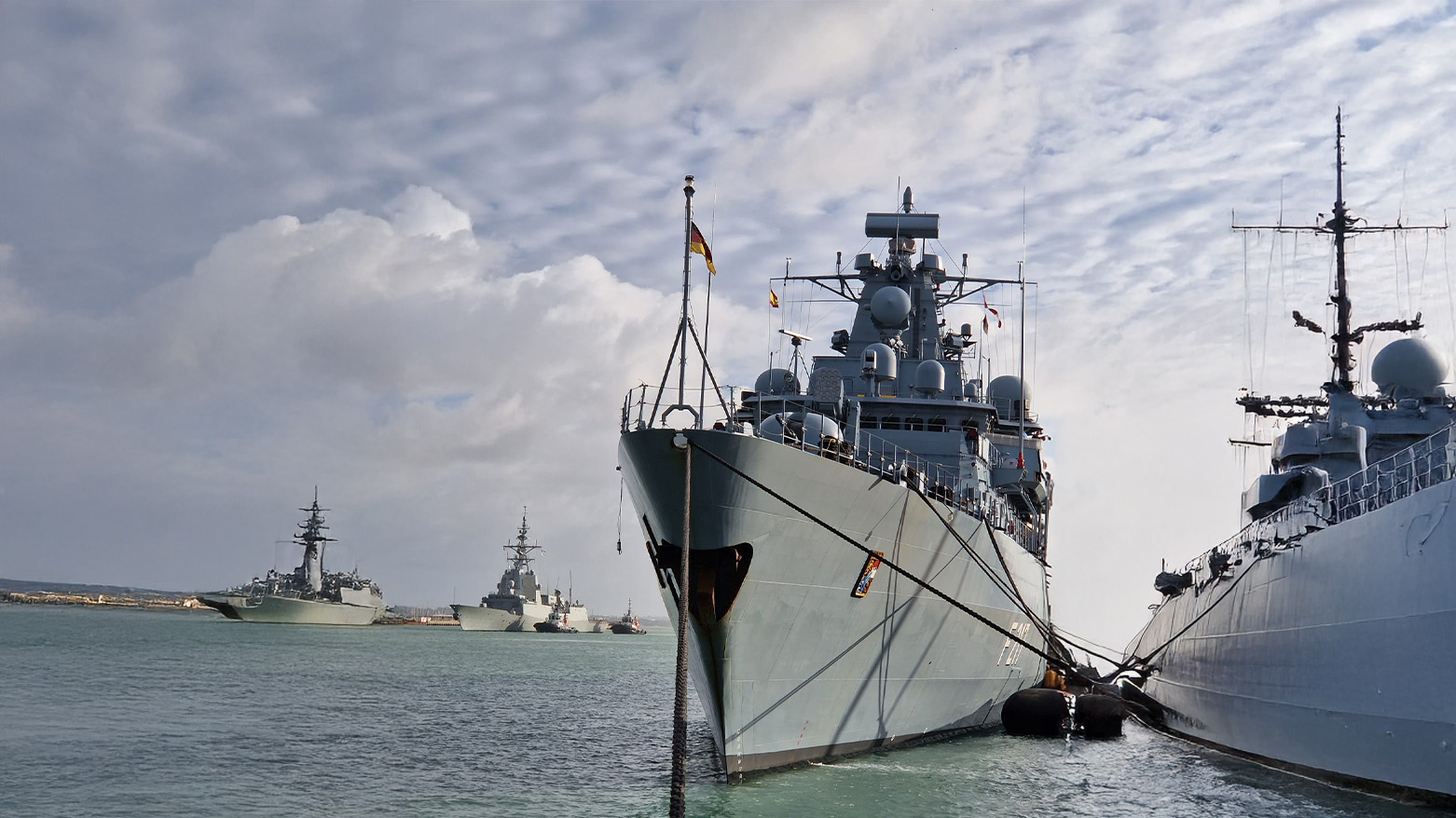NATO Launches Major Mediterranean Naval Exercise Amid Rising U.S.-Iran Tensions
The commencement of NATO’s naval exercise coincides with heightened tensions between the U.S. and Iran, particularly over Iran’s nuclear program.

ERBIL (Kurdistan24) – NATO has officially launched Exercise Dynamic Mariner-Flotex 25, a large-scale multinational maritime drill designed to bolster Allied naval cooperation, enhance operational readiness, and demonstrate the Alliance’s commitment to securing vital sea lanes.
The exercise, taking place in the western Mediterranean Sea and the Atlantic Ocean from Mar. 24 to Apr. 4, 2025, comes at a time of escalating global tensions, particularly concerning Iran’s nuclear ambitions and growing instability in the Middle East.
Led by Spanish naval forces, the exercise involves an extensive fleet of warships, submarines, maritime patrol aircraft, and fighter jets, with participation from six NATO nations: France, Germany, Italy, Portugal, Spain, and Türkiye. The drills will test NATO’s ability to respond rapidly to emerging maritime threats, ensuring Allied forces remain prepared for any potential security challenges at sea.
Exercise #DynamicMariner25 has begun in the 🇪🇸Mediterranean Sea, strengthening Allied naval forces in the largest #NATO maritime exercise of the year!💪⚓️Read more: https://t.co/uq6hpOg85Y
— NATO Maritime Command (@NATO_MARCOM) March 24, 2025
✅Anti-Submarine Warfare (ASW) – Detecting and tracking undersea threats
✅Surface Warfare… pic.twitter.com/SSfbQUwXxM
Strategic Importance Amid Middle Eastern Tensions
The commencement of NATO’s naval exercise coincides with heightened tensions between the U.S. and Iran, particularly over Iran’s nuclear program. White House National Security Adviser Mike Waltz recently reaffirmed the Trump administration’s firm stance on Iran’s nuclear ambitions, demanding the “full dismantlement” of its program. Waltz warned that failure to comply could result in dire consequences, stressing that Washington would not tolerate any further advancements in Iran’s nuclear weapons capabilities or its strategic missile programs.
The geopolitical stakes have been further raised by Iran’s support for the Yemen-based Houthi rebels, who have increasingly targeted military and commercial vessels in the Red Sea—a critical global trade route. President Donald Trump has vowed to hold Iran accountable for any Houthi-led disruptions, reinforcing the administration’s broader regional strategy to counter Tehran’s influence.
Exercise Dynamic Mariner: Strengthening NATO’s Readiness
Against this backdrop, Exercise Dynamic Mariner / Flotex 25 serves as a crucial demonstration of NATO’s maritime power and interoperability. The drills will focus on maritime expeditionary operations, crisis response, and the introduction of the new NATO Allied Reaction Force Maritime element (ARF/M), which Spain will lead starting in July 2025. This initiative marks a significant shift in NATO’s strategic framework, enhancing its ability to deploy multi-domain forces rapidly and address conventional, hybrid, and cyber threats.
Additionally, for the first time, the Turkish Amphibious Task Force will assume command of the ARF’s amphibious operations, reinforcing NATO’s ability to conduct complex joint missions. The inclusion of Standing NATO Maritime Group 2 (SNMG2) and Standing NATO Mine Countermeasures Group 2 (SNMCMG2) further underscores the Alliance’s commitment to seamless cooperation and high readiness in naval operations.
“With Dynamic Mariner / Flotex-25, the interoperability and cohesion among Allied naval forces will reach unprecedented levels,” said Turkish Rear Admiral H. Ilker Avci, Commander of SNMG2. “This exercise showcases our ability to generate multi-domain effects above and below the sea, on land, and in the air.”
A Show of Strength and Deterrence
As NATO flexes its maritime capabilities in the Mediterranean, the strategic messaging is clear: the Alliance remains committed to safeguarding its waters and responding to evolving global threats. In the context of rising U.S.-Iran tensions, the exercise serves as a strong signal of collective defense readiness, reinforcing NATO’s role in maintaining international stability.
With the Trump administration maintaining pressure on Iran and the region facing heightened uncertainty, NATO’s naval exercises highlight the critical need for strong Allied cooperation and preparedness. Whether through diplomacy or deterrence, the coming months will be pivotal in shaping the future security landscape in both the Mediterranean and the broader Middle East.
